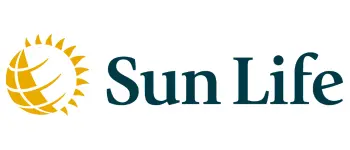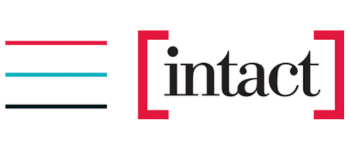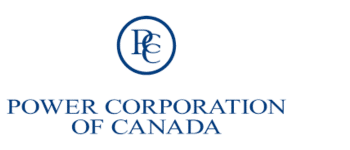These Insurance Companies Might Have You Covered – But Do You Have Their Sector Covered?
Key takeaways
Strong Dividends and Stability: Canadian insurance stocks, like Sun Life, Intact Financial, and Power Corporation, are known for their reliable dividends and stable cash flows, making them ideal for income-focused investors.
Growth Beyond Canada: These companies are increasingly looking to international markets for expansion, such as Sun Life’s push into Asia and Intact Financial’s RSA acquisition, highlighting opportunities for global growth.
Resilience Amid Market Challenges: Despite risks like climate-related claims or regulatory pressures, the insurance sector remains resilient due to mandatory coverage needs, diversified business models, and effective risk management strategies.
3 stocks I like better than the ones on this list.Investing is all about putting cash in what you know. Canadian insurance stocks are great for this since insurance is a simple, everyday idea. Plus, market conditions now are perfect for these stocks, and they’ve realized outstanding returns over the last few years.
I’m going to go over 3 insurance companies that I believe are some of the strongest options in the country at this point.
I’ve attempted to pick individual insurers from different insurance segments, so that there is something for everyone on this list. Of note, these stocks are in no particular order.
As always, if you’re looking for more research, top stock picks, market commentary and more, join our weekly newsletter, absolutely free by clicking here.
The top Canadian insurance stocks to buy today
Global life insurance and asset manager
Sun Life Financial (TSX:SLF)

Sun Life Financial is one of Canada’s largest life insurance companies, offering a mix of individual and group life insurance, health insurance, and wealth management solutions. The company operates in multiple global markets, including Canada, the U.S., and Asia, positioning itself as a key player in the growing international insurance and asset management industry. Sun Life is well-known for its focus on innovation and digital tools, making it easier for clients to manage their insurance and investment products.
P/E: 14.7
5 Yr Revenue Growth: -6.9%
5 Yr Earnings Growth: 3.0%
5 Yr Dividend Growth: 8.4%
Yield: 4.2%
Canada’s largest property and casualty insurer
Intact Financial (TSX:IFC)

Intact Financial focuses on providing home, auto, and commercial insurance products across Canada, the U.S., and parts of Europe. The company has a strong reputation for risk management and disciplined underwriting, which has allowed it to dominate the Canadian property and casualty (P&C) insurance market. Recent acquisitions, such as RSA Insurance, have expanded its footprint and diversified its offerings, especially in the commercial insurance space.
P/E: 23.2
5 Yr Revenue Growth: 15.9%
5 Yr Earnings Growth: 19.5%
5 Yr Dividend Growth: 9.7%
Yield: 1.7%
Diversified financial services holding company
Power Corporation (TSX:POW)

Power Corporation owns a significant stake in Great-West Lifeco, one of Canada’s leading life insurance companies, as well as other financial services companies like IG Wealth Management and Mackenzie Investments. Unlike pure-play insurance companies, Power Corporation is a diversified holding company, blending insurance, wealth management, and asset management businesses under one roof. The company also invests in emerging sectors like renewable energy through its subsidiary Power Sustainable.
P/E: 12.2
5 Yr Revenue Growth: -4.0%
5 Yr Earnings Growth: 10.6%
5 Yr Dividend Growth: 7.1%
Yield: 4.4%
Why insurance stocks in Canada moving forward?
There’s certainly a bullish case for insurance stocks, considering the current economic environment.
Not everybody knows the complexities of the 80-page insurance policy they deliver you annually. But we know you need insurance to drive a vehicle, to own a home, and many get a life insurance policy at some point.
Even health insurance products in the United States are available to protect people from costly situations regarding their private healthcare situation.
But, you’re likely unaware that there are many different types of Canadian insurance stocks and insurance providers, and there aren’t too many “all in one” solutions here in Canada.
From P&C (property and casualty) insurers to life insurers, there is a ton of variety here among Canadian stocks. Buying one might not get you exposure to all types.
Canadian fintech stocks might struggle as spending relaxes due to higher interest rates. However, increasing rates benefits insurance companies and financial companies as a whole.
For the most part, insurance companies invest their collected premiums into low-risk assets, many of which are highly dependent on interest rates.
In the situation of life insurance companies, they also offer products that are highly dependent on rates. When rates go up, these companies earn more and can charge more.
Related
Best Canadian Bank Stocks to Buy

Do insurance ETFs exist?
Finding a pure-play insurance ETF here in Canada is not easy. This is simply because we do not have enough companies nor the popularity to generate enough fund flows regarding insurance stocks.
However, something like the iShares Equal Weight Banc & Lifeco ETF (TSE:CEW), or the CI U.S. & Canada Lifeco Income ETF (TSE:FLI) can give you good exposure to the sector.
CEW is an ETF that offers exposure to both Canadian insurers and Canadian banks. At the same time, FLI is both Canadian and United States insurance companies.



